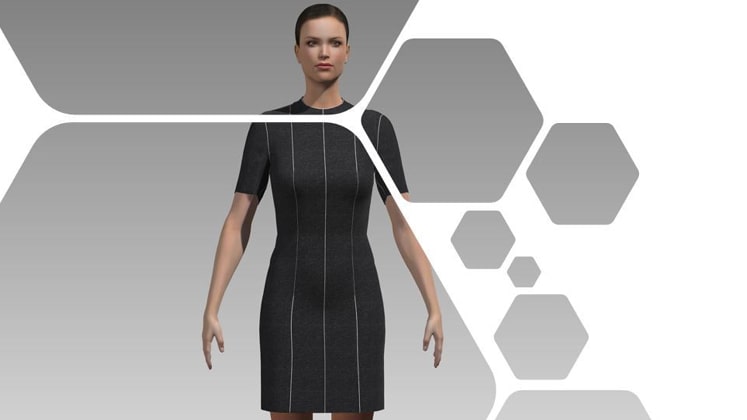News and Features
Is digitisation the future of fashion? Industry experts share views!
16 September 2020
Apparel Resources

The apparel industry should re-look at their business models in order to reduce the lead time, wastage, improve efficiency and productivity, and reduce the time to market. The traditional way of operating ‘Design-Produce-Sell’ holds no relevance, as retailers are focusing on smaller quantities and increasing inventory turns. The new business model is ‘Design-Sell-Produce’ which is made possible through digitisation of process in the supply chain that helps in eliminating the unnecessary steps and processes that are involved in doing the task physically.
Though the benefit of digitisation is known to everyone, the actual implementation is quite less.
“There is only 18 per cent penetration of digital technology, and Asia is between 5 and 7 per cent,” said Manish Bharati, former VP, Li & Fung; currently the Business Head – Virtual Manufacturing at Bharitya International India.
Cobalt Fashion, based in Hong Kong, a leading knitwear specialist since 1973, is following their digital transformation journey. The company has around 110 factories with nearly 36,000 machines and 70,000 workers producing almost 56 million of garments annually and serving nearly 300 customers situated in different parts of the world. In order to manage such a vast ecosystem, the company is building a digital ecosystem that drives speed and innovation of the company.
Through digitisation, the company wanted to encounter the challenges of the current market like the change in consumer buying behaviour due to the rising use of social media platforms that created a need for newness, and therefore, product innovation. Moreover, the designs made have to be quickly introduced in the market owing to the rapidly changing trends and the increasing competition; therefore, manufacturers need to focus on shorter production lead time to reduce the market time.
To address the ‘speed to market’, the company focused on increasing the inventory turns, thus increasing the probability by selling the products at a better price. “For this, the right approach is to make customer-centric products, bring innovation and differentiated products in lesser quantity so that the products are sold more at full price and less on discounts,” said Roger Chan, Executive Director, Cobalt Fashion.
For working on innovation, the knitwear specialist – in collaboration with Shima Seiki, a Japan-based leading flat knitting machine manufacturer – opened a CS (Cobalt ShimaSeiki) innovation lab in 2017. The lab is equipped with advanced whole garment and inlay machine as well as software with 3D and virtual design capabilities for gaining efficiency in knitwear design and manufacturing, and experimenting with innovations to come out with new products. The company is also building the world’s biggest digital library that leverages the use of Artificial intelligence (AI) to search for the right component for the creation of virtual sample options.

The digital library consists of 8,500 yarns, 11,000 stitches, 2,700 silhouettes that allow the creation of almost 252 billion of virtual sample options. The designs created are shared for approval and feedback through the 3D virtual design software that increases turnarounds and reduces cost, increasing design flexibility and reducing wastage of material and carbon footprints. With digitisation of the complete process of virtual product development from inspiration to yarn research to manufacturing, it takes around 18 days which in traditional method takes around 50 to 60 days, thus saving around 33-42 days and almost 60-70 per cent of total time.
For bringing the right product to the market, the company also leverages the use of data analytics to help retailers choose the right product at the right time. “We utilise AI for data scrapping from social media to keep track of what is trending, and also, since we believe that the human creativity cannot be replaced by computer power, we have a team of 80-plus designers and product developers located in different parts of the world who are connected through a centralised design communication platform,” said Roger.
For the sample making process, the company leverages the use of Alibaba Cloud Image Search Engine, an intelligent image search service that helps users find similar or identical images. This allows the company to search for matching yarn colours for sewing on the designs; therefore, by applying the yarns on the stitches, the company can simulate highly realistic yarns. “Before making the physical samples, we would do 2D mapping by applying the stitches on the live model of the customers. Once the designers are satisfied with the virtual samples, we do the physical sampling,” said Roger.
Digitisation for transparency and collaboration
Oculas, launched in 2017, aims for the development of a new supply chain for direct-to-consumer (D2C) brands and e-retailers. The company helps connect the retailers with small order quantities with potential suppliers. “Back in 2016, we could sense that there will be a transition from bricks-and-mortar retail into e-commerce retail and also D2C brands, and therefore, we launched Oculas,” said Guido Schlossmann, President/CEO, Synergies Worldwide, the parent company of Oculas.
The start-up is working on digitising the complete supply chain including consumer trend, design, product development, sampling, sourcing and production, production management, technical advice, inspection, shipment, invoicing, warehousing, distribution and sales.
Starting the complete transformation journey, the company began with the basic process of invoicing and warehousing through the use of Electronic Data Interchange (EDI), the concept that allows businesses to electronically communicate information like purchase order and invoice – that was traditionally done through paper. The company then shifted its focus to the use of machine learning integrated Enterprise Resource Planning (ERP) modules for collaboration between the inspection and technical team, helping in meeting the quality level required in the products. Through this, the company improved transparency and also established analytics in the process. The major step that the company took was to digitise the whole process of design, product development and sampling into one process with the use of technology. “The whole process was focused to become more agile in the supply chain activity and shorten the lead time, as we found out these are the key needs and aspects of e-commerce retailers,” said Guido.
The company is also working on digitising the production management process with the use of barcode scanner, and thus, eliminating any manual work and excel sheets. The integration of barcode scanner at different parts of the process would help standardise the data that can be uploaded on the internet platform for generation of quick reports, therefore eliminating human errors. The company is also working on a mobile application for better connectivity between the buyer, manufacturer and retailer.
Comments

